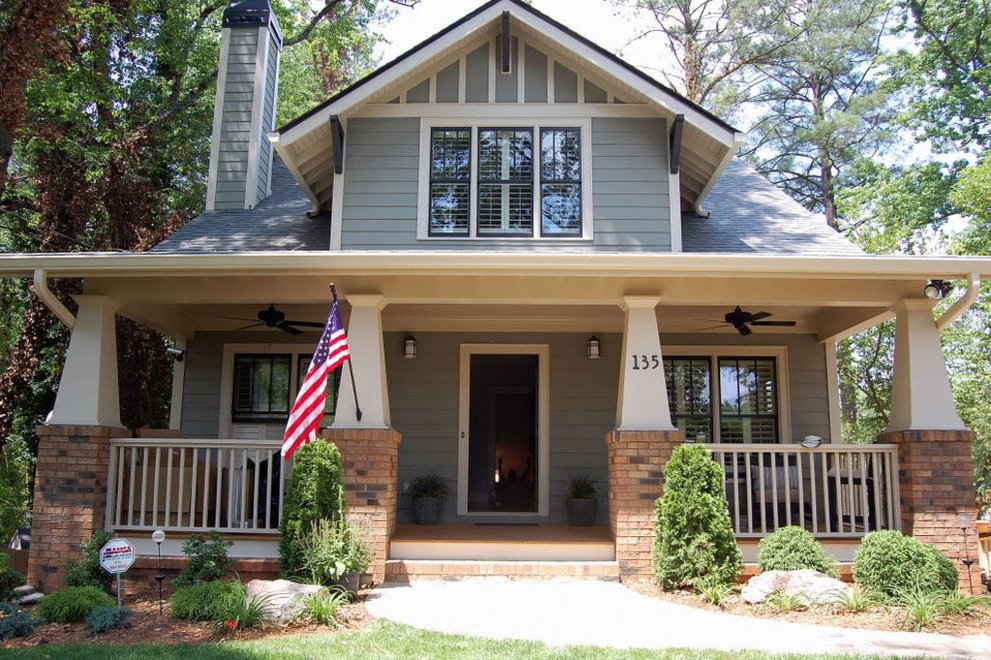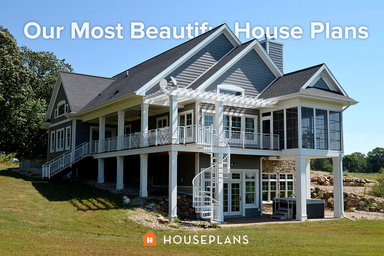First, what is architectural style?
A form of classification – historians use it as a tool for
understanding the life of forms in architecture – where they come from, what
they mean, how they reflect a particular period or point of view.
Is identifying architectural style a form of bird watching? Not according to the experts!
“…a style is far from the being the same thing as a species. Not only may individual buildings classifiable as the same type differ from each other in more noticeable ways than they resemble each other, but styles possess an almost limitless capacity for hybridization.” American Architecture Since 1780, by Marcus Whiffen
“While the individual work has one determined physical manifestation, the style has an infinite number of such manifestations. While the individual work concretizes a particular situation, the style concretizes a collection of such manifestations; in principle it may concretize a culture in its totality.” Intentions in Architecture, by Christian Norberg-Schulz.
Current Popular Plans, by Style
Craftsman Deriving from Arts & Crafts precedents, this popular style features wide porches and natural materials.
 Plan 120-162 – A kind of Romantic or “Hansel &
Gretel” Craftsman, using battered stone
walls, expressive wood detailing and small gables.
Plan 120-162 – A kind of Romantic or “Hansel &
Gretel” Craftsman, using battered stone
walls, expressive wood detailing and small gables.
 Plan 132-207 – A more straightforward interpretation of
Craftsman, with expressive wood brackets, beam ends, and trusses.
Plan 132-207 – A more straightforward interpretation of
Craftsman, with expressive wood brackets, beam ends, and trusses.
Bungalow A compact gabled house with a usable porch at front or back. Historian Robert Winter identified the California Bungalow as a version with more extreme garden- and nature-oriented features.
 Plan
461-3 – Simplified forms of the Craftsman style that refer specifically to small gabled houses with porches.
Plan
461-3 – Simplified forms of the Craftsman style that refer specifically to small gabled houses with porches.
Country or Farmhouse Usually two-story gabled houses with porches across or around the front.
 Plan 137-252 – The wraparound veranda and simple gable roof
are key characteristics.
Plan 137-252 – The wraparound veranda and simple gable roof
are key characteristics.
 Plan 888-7 – A version of the Country or Farmhouse style
derived more specifically from barn shapes.
Plan 888-7 – A version of the Country or Farmhouse style
derived more specifically from barn shapes.
 Plan 23-587 -- Large porches and gables but little or no
Classical detailing.
Plan 23-587 -- Large porches and gables but little or no
Classical detailing.
 Plan 17-1017 – Ditto.
Plan 17-1017 – Ditto.
Cottage A smaller design evoking a rustic charm with board-and batten, shingle, or stucco siding and simple gable roofs. More loosely defined than a bungalow. One definition by a writer from 1901 still seems useful: “A Cottage is a little house in the country, but a Bungalow is a little country house.”
 Plan 514-6 – Smaller than a bungalow.
Plan 514-6 – Smaller than a bungalow.
 Plan 479-7 Simple gable, shed dormer, plus deck – a modern
cottage.
Plan 479-7 Simple gable, shed dormer, plus deck – a modern
cottage.
Modern Essentially deriving from the International style.
 Plan 496-18 – Simple, geometric, unornamented surfaces,
large expanses of glass. Here the hip roof and the ribbon of glass under the
eaves echo work by Frank Lloyd Wright in his so-called Prairie Style houses in
Chicago from the early 20th century.
Plan 496-18 – Simple, geometric, unornamented surfaces,
large expanses of glass. Here the hip roof and the ribbon of glass under the
eaves echo work by Frank Lloyd Wright in his so-called Prairie Style houses in
Chicago from the early 20th century.
Ranch A version of the Modern style, but more specifically associated with long, low one-story houses having shallow gable roofs.
 Plan 544-1 – Channeling Cliff May ranch houses.
Plan 544-1 – Channeling Cliff May ranch houses.
 Plan 48-600 – A shingled version of a ranch house. Some
ranch houses sport detailing from other styles.
Plan 48-600 – A shingled version of a ranch house. Some
ranch houses sport detailing from other styles.
Contemporary A version of Modern, but more associated with angled roof shapes than with flat, encompassing designs from the 1950s, 1960s, and 70s, like houses at The Sea Ranch.
 Plan 48-571 – Shed roofs are particularly characteristic of
Contemporary style.
Plan 48-571 – Shed roofs are particularly characteristic of
Contemporary style.
Classical If we were being consistent this should really be called Classical Revival, but we are using this term very generally to mean plans with Classical features, not plans designed in some Classical era.
 Plan 137-222 – This plan has a monumental classical portico,
a symmetrical arrangement, shutters, and a cupola that recalls Washington’s Mt.
Vernon.
Plan 137-222 – This plan has a monumental classical portico,
a symmetrical arrangement, shutters, and a cupola that recalls Washington’s Mt.
Vernon.
Colonial Though, strictly speaking, for historians, Colonial refers to the architecture produced during the Colonial era. We are really talking about Colonial Revival plans – though even this refers too specifically to the era—from the 1890s to through the 1920s – when the Colonial Revival first flourished.
 Plan 137-188 – Classical details are emphasized in the
columns along the front porch, the simplified pediment dormers, and shutters.
The designer calls this Country Farmhouse style, but because of these extra
details it’s really a simplified form of Colonial Revival.
Plan 137-188 – Classical details are emphasized in the
columns along the front porch, the simplified pediment dormers, and shutters.
The designer calls this Country Farmhouse style, but because of these extra
details it’s really a simplified form of Colonial Revival.
 Plan 530-1 – Simple large gabled volume with minimal
overhangs and large central chimney.
Plan 530-1 – Simple large gabled volume with minimal
overhangs and large central chimney.
Is identifying architectural style a form of bird watching? Not according to the experts!
“…a style is far from the being the same thing as a species. Not only may individual buildings classifiable as the same type differ from each other in more noticeable ways than they resemble each other, but styles possess an almost limitless capacity for hybridization.” American Architecture Since 1780, by Marcus Whiffen
“While the individual work has one determined physical manifestation, the style has an infinite number of such manifestations. While the individual work concretizes a particular situation, the style concretizes a collection of such manifestations; in principle it may concretize a culture in its totality.” Intentions in Architecture, by Christian Norberg-Schulz.
Current Popular Plans, by Style
Craftsman Deriving from Arts & Crafts precedents, this popular style features wide porches and natural materials.
 Plan 120-162 – A kind of Romantic or “Hansel &
Gretel” Craftsman, using battered stone
walls, expressive wood detailing and small gables.
Plan 120-162 – A kind of Romantic or “Hansel &
Gretel” Craftsman, using battered stone
walls, expressive wood detailing and small gables.
 Plan 132-207 – A more straightforward interpretation of
Craftsman, with expressive wood brackets, beam ends, and trusses.
Plan 132-207 – A more straightforward interpretation of
Craftsman, with expressive wood brackets, beam ends, and trusses.
Bungalow A compact gabled house with a usable porch at front or back. Historian Robert Winter identified the California Bungalow as a version with more extreme garden- and nature-oriented features.
 Plan
461-3 – Simplified forms of the Craftsman style that refer specifically to small gabled houses with porches.
Plan
461-3 – Simplified forms of the Craftsman style that refer specifically to small gabled houses with porches.
Country or Farmhouse Usually two-story gabled houses with porches across or around the front.
 Plan 137-252 – The wraparound veranda and simple gable roof
are key characteristics.
Plan 137-252 – The wraparound veranda and simple gable roof
are key characteristics.
 Plan 888-7 – A version of the Country or Farmhouse style
derived more specifically from barn shapes.
Plan 888-7 – A version of the Country or Farmhouse style
derived more specifically from barn shapes.
 Plan 23-587 -- Large porches and gables but little or no
Classical detailing.
Plan 23-587 -- Large porches and gables but little or no
Classical detailing.
 Plan 17-1017 – Ditto.
Plan 17-1017 – Ditto.
Cottage A smaller design evoking a rustic charm with board-and batten, shingle, or stucco siding and simple gable roofs. More loosely defined than a bungalow. One definition by a writer from 1901 still seems useful: “A Cottage is a little house in the country, but a Bungalow is a little country house.”
 Plan 514-6 – Smaller than a bungalow.
Plan 514-6 – Smaller than a bungalow.
 Plan 479-7 Simple gable, shed dormer, plus deck – a modern
cottage.
Plan 479-7 Simple gable, shed dormer, plus deck – a modern
cottage.
Modern Essentially deriving from the International style.
 Plan 496-18 – Simple, geometric, unornamented surfaces,
large expanses of glass. Here the hip roof and the ribbon of glass under the
eaves echo work by Frank Lloyd Wright in his so-called Prairie Style houses in
Chicago from the early 20th century.
Plan 496-18 – Simple, geometric, unornamented surfaces,
large expanses of glass. Here the hip roof and the ribbon of glass under the
eaves echo work by Frank Lloyd Wright in his so-called Prairie Style houses in
Chicago from the early 20th century.
Ranch A version of the Modern style, but more specifically associated with long, low one-story houses having shallow gable roofs.
 Plan 544-1 – Channeling Cliff May ranch houses.
Plan 544-1 – Channeling Cliff May ranch houses.
 Plan 48-600 – A shingled version of a ranch house. Some
ranch houses sport detailing from other styles.
Plan 48-600 – A shingled version of a ranch house. Some
ranch houses sport detailing from other styles.
Contemporary A version of Modern, but more associated with angled roof shapes than with flat, encompassing designs from the 1950s, 1960s, and 70s, like houses at The Sea Ranch.
 Plan 48-571 – Shed roofs are particularly characteristic of
Contemporary style.
Plan 48-571 – Shed roofs are particularly characteristic of
Contemporary style.
Classical If we were being consistent this should really be called Classical Revival, but we are using this term very generally to mean plans with Classical features, not plans designed in some Classical era.
 Plan 137-222 – This plan has a monumental classical portico,
a symmetrical arrangement, shutters, and a cupola that recalls Washington’s Mt.
Vernon.
Plan 137-222 – This plan has a monumental classical portico,
a symmetrical arrangement, shutters, and a cupola that recalls Washington’s Mt.
Vernon.
Colonial Though, strictly speaking, for historians, Colonial refers to the architecture produced during the Colonial era. We are really talking about Colonial Revival plans – though even this refers too specifically to the era—from the 1890s to through the 1920s – when the Colonial Revival first flourished.
 Plan 137-188 – Classical details are emphasized in the
columns along the front porch, the simplified pediment dormers, and shutters.
The designer calls this Country Farmhouse style, but because of these extra
details it’s really a simplified form of Colonial Revival.
Plan 137-188 – Classical details are emphasized in the
columns along the front porch, the simplified pediment dormers, and shutters.
The designer calls this Country Farmhouse style, but because of these extra
details it’s really a simplified form of Colonial Revival.
 Plan 530-1 – Simple large gabled volume with minimal
overhangs and large central chimney.
Plan 530-1 – Simple large gabled volume with minimal
overhangs and large central chimney. 





